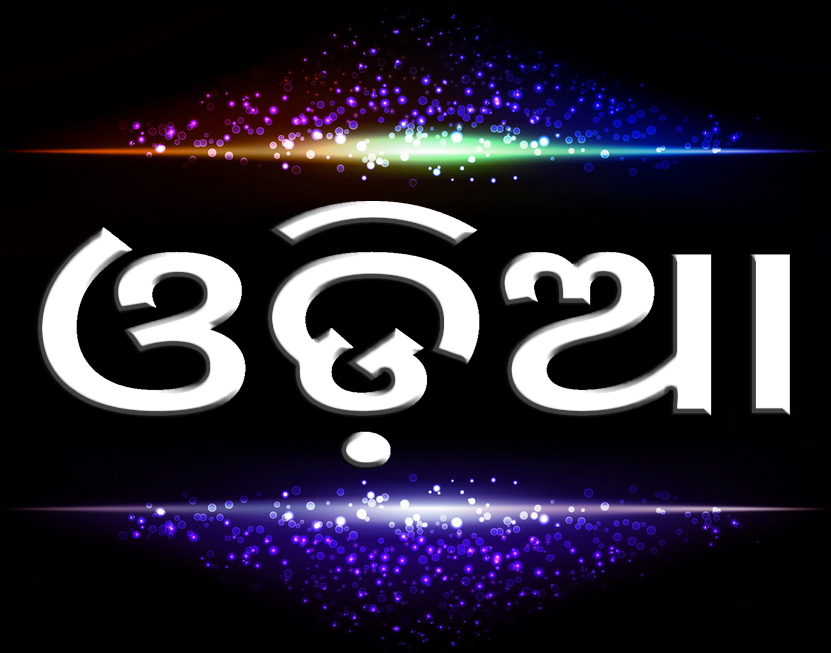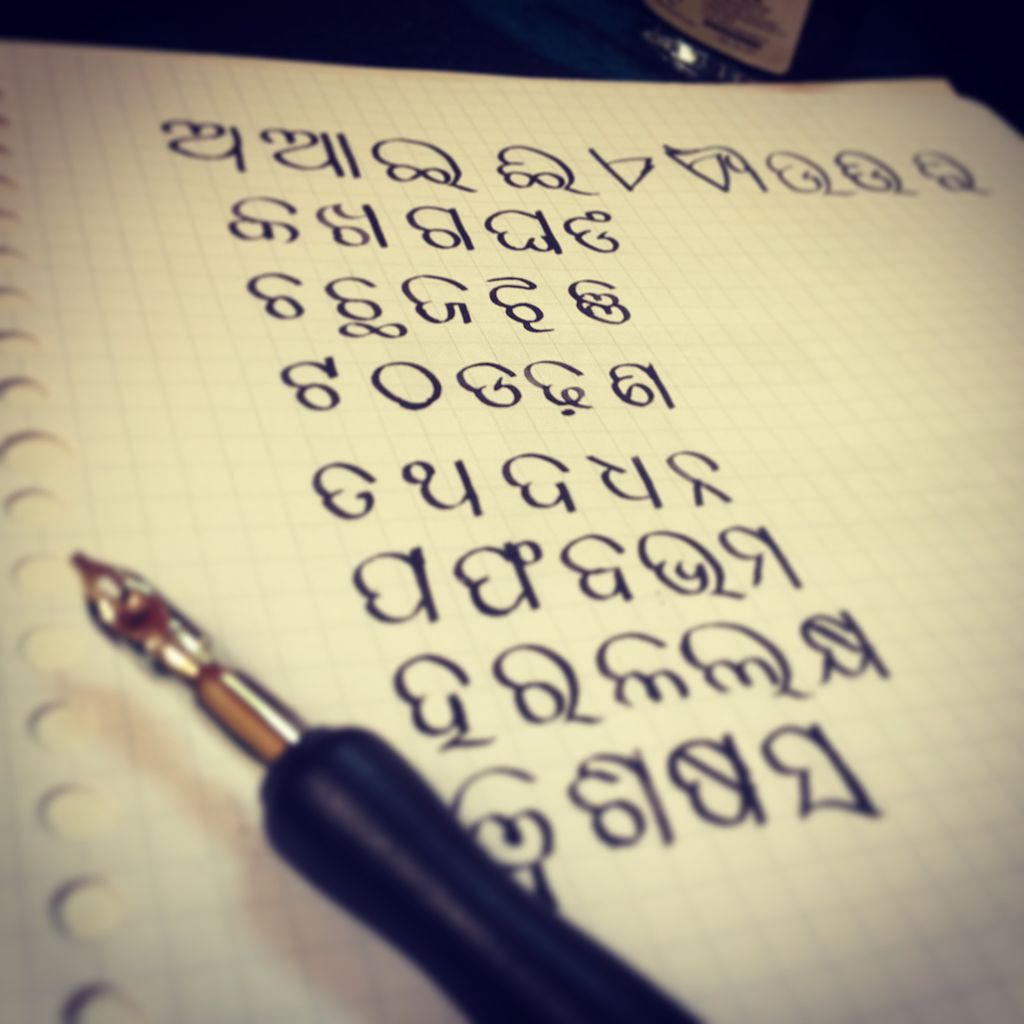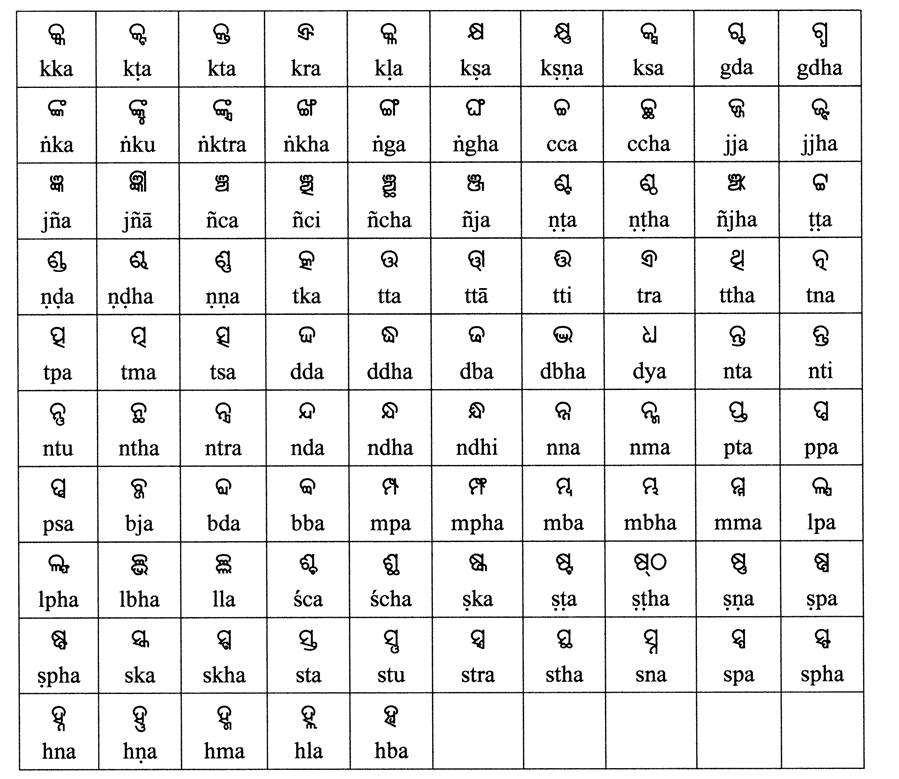
AuthorAiswariya DeivamUpdated on CategoriesLanguages
‘ORIYA’ ( ଓଡ଼ିଆ ) – THE HISTORY:
‘ORIYA’ ( ଓଡ଼ିଆ ) – THE HISTORY:
Oriya language, also spelled Odia, Indo-Aryan language with some 50 million speakers. A language officially recognized, or “scheduled,” in the Indian constitution, it is also the main official language of the Indian state of Orissa. Oriya, also known as Odisha, a member of the Indo-Aryan branch of the Indo-European language family.

By Aiswariya Deivam
Origin and development :
Oriya has been heavily influenced by the Dravidian languages as well as Arabic, Persian, and English. Its lexicon has been enriched by borrowings from these languages as well as from Tamil, Telugu, Marathi, Turkish, French, Portuguese, and Sanskrit. Words borrowed from Sanskrit occur in two forms: tatsama (close to the original form) and tadbhava (remote from the original form).
In a recent minor amendment in the Lok Sabha on September 6, 2011, the official name of the state Orissa has become Odisha, and the name of the language Oriya has become Odia. I will follow here the classical spelling. According to the survey report, based on the census in 2001, there are ca. 33 million native speakers of the Oriya language in India. This language belongs to the eastern group of Indo-Aryan family.
A remarkable speciality in the Oriya letter is the typical style of the curve which is present instead of the horizontal top line of Devanagari in almost all the letters, except the central part of the letter which is reduced in size and difficult to recognize at first glance. Therefore to a learner of the script, the majority of the letters may appear almost identical in the beginning. Oriya allows compounding, but unlike Sanskrit it does not allow elision. The use of compounds is more a feature of written than of spoken Oriya. Oriya has 6 pure vowels, 9 diphthongs, 28 consonants (3 of them retroflex), 4 semivowels, and no consonant-ending words. The written form uses three diacritics: visarga, anusvara, and candrabindu.
Oriya grammar distinguishes between singular and plural number; first, second, and third person; and masculine and feminine gender, although the gender of the noun has no morphological consequences for the pronoun and the verb. It is an inflectionally rich language. Nominals carry number and case inflections, while adjectives carry inflections indicating degree and, for the tatsama adjectives, gender.
Oriya is a subject–object–verb (SOV) language with a three-tier tense system. The finite verb agrees with its subject in person and number and also marks the honorific form. The main moods are indicative, imperative, interrogative, and subjunctive. The copula does not surface if the sentence is in the present tense. It is possible for main clauses—and some subordinate clauses—to be without a subject.
In Oriya inscriptions from between the 12th and the 14th century, word order is relatively free, and verb–object sequence (with the subject before or after) is not infrequent. Other historical changes include the loss of some plural markers and some postpositions. The indirect speech, relative clauses, and passive constructions found in English have emerged in Oriya, although these are considered nonstandard forms. New discursive forms such as the essay and news reporting and analysis have also come to Oriya from English. Scholarly speech and writing still remain fairly Sanskritized, however.
Oriya is thought to have descended from a Prakrit spoken in Eastern India over 1,500 years ago. Of all the languages spoken in Northern India, Oriya shows the least influence of Persian and Arabic. However, it shows significant Buddhist and Jain influences.
Oriya is one of the 22 official languages and 14 regional languages of India. It is a statutory provincial language in Odisha State, serving as the medium of everyday communication, as well as being used in education, government, business and in the media.


Dialects :
(Ethnologue) identifies a number of regional varieties of Oriya:
• Halbi
• Midnapore Oriya
• Mughalbandi (Standard Oriya)
• North Balasore Oriya
• Northwestern Oriya
• Southern Oriya
• Western Oriya
Vocabulary :
Most of Oriya’s vocabulary derives from Sanskrit. The language also has loanwords from Persian, Arabic and from the Austronesian languages spoken by the inhabitants of the ancient Kalinga empire whose territory comprised most of the state of Odisha and parts of the neighboring state of Andhra Pradesh.
Here are some common phrases and words in Oriya.
• Hello – Namaskar
• Goodbye – Bidaay namaskar
• Thank you – Dhanyabada
• Please -Dayakari
• Yes – han
• No – na
Writing :
Oriya has a strong literary heritage dating back to the 13th century. Oriya script is an abugida written from left to right. Abugida is a type of writing system in which each character represents a consonant followed by a specific vowel. Other vowels are represented by a modification of the consonant symbol. Oriya script developed from the Brahmi script. It is thought that the rounded shapes of the Oriya characters resulted from writing on palm fronds with a sharp stylus. Straight lines and sharp angles would have torn the fronds.
Classification:
• Indo-European,
• Indo-Iranian,
• Modern Indo-Aryan,
• Eastern.
Oriya is closely related to Bengali and Assamese.
Overview :
Oriya is one of the many regional languages of India belonging to the Indo-Aryan branch of Indo-European. It was born in what is now the state of Orissa in the northeast of the country at a period when political fragmentation was giving way to a unified kingdom under the Oriental Ganga dynasty (10-11th centuries), a time that also saw the flourishing of a major style of Hindu architecture.Oriya is spoken mainly in the states of Orissa and Chhattisgarh in eastern India. There also significant numbers of Oriya speakers in Madhya Pradesh, Jharkhand, Bihar, Andhra Pradesh, West Bengal and Assam.
Speakers :
Around 38 million in the following Indian states:
• Orissa -35,400,000
• Chhattisgarh – 950,000
• Jharkhand – 543,000
• Andhra Pradesh – 390,000
• Assam – 268,000
• West Bengal – 216,000
• Gujarat – 142,000
Varieties :
There are four dialects in the state of Orissa: Standard Oriya, prevalent in the capital Bhubaneshwar and in the districts of Cuttak and Puri, and Western, Northern, and Southern dialects, prevalent in the western, northern and southern regions of the state, respectively. The last three are influenced by the languages spoken in neighboring states (Hindi in the west, Bengali in the north and Telugu in the south). Two Oriya stylistic forms can be distinguished: formal and informal, the former using more Sanskrit loanwords and restricted mainly to writings.
History of the Oriya Language :
Oriya is one of the 22 languages recognized and spoken by close to 40 million people all over the world. Besides being the mother tongue of the state of Orissa, one can find Oriya speaking people in Seraikela Kharsawan district of Jharkhand, Midnapore district of West Bengal, Bastar district of Chhatisgarh and Srikakulam district of Andhra Pradesh.
Oriya belongs to the Indo-Aryan language family that has a strong influence of the two modern languages; viz Bengali and Assamese. However, the Oriya interestingly seems to be relatively the least dominated by Arabic and Persian, despite being under the Mughal rule for a long time.
Tracing back its roots to the 10th century, Oriya has originated from the Eastern Magadhi Apabhramsa, along with Bengali and Assamese. In the 16th and 17th century, Oriya was greatly influenced by Sanskrit, but it followed a fresh line of approach during the 17th and 18th centuries.The Oriya language is divided in the following 5 categories:
• Old Oriya (10th century – 1300)
• Early Middle Oriya (1300 – 1500)
• Middle Oriya (1500 – 1700)
• Late Middle Oriya (1700 – 1850)
• Modern Oriya (1850 till present day)
Modern Oriya :
Modern Oriya spoken today is known to have been derived from the Prakrit form known as Pali or Magadhi, a language that was prevalent across cultures and kingdoms in Eastern India, about 1500 years ago.
Oriya is essentially the modified version of Odri Prakrit, which in turn is derived from Sanskrit via the transitional Bibhasas. The Modern Oriya’s vocabulary is projected to be 70% Sanskrit, 2% Arabic / Persian / Hindustani and the remaining 28% of “Adivasi” origin.
The 2nd century B.C Ashokan edicts script at Jaugada and Dhauli as well as the inscriptions of Kharavela in Hati Gumpha of Khandagiri give us the first glimpse of the possible birth of the Oriya language.
Script of Modern Oriya :
The script of modern Oriya is a development of the Kalinga script. In the year 1051, the initial inscription in the Oriya language in the Kalinga script was discovered. The rounded appearance of the alphabets reveals key features of the Oriya script. This appearance was largely due to the ancient practice of writing manuscripts on palm leaves that has a tendency to tear if too many straight lines were used on the surface.
Oriya is a relatively young language in comparison to some other Indian languages. The huge display of styles in Oriya literature highlights the modern outlook of the Oriyas as a whole. Thus, this powerful and dynamic language will continue to retain its exclusive place in the gamut of modern Indian history and culture with the digitization efforts being undertaken currently.
This brief overview gives only a first impression of the richness of the tradition of Oriya. The knowledge of Oriya script gives access to one of the largest treasure-troves of inscriptions and palm-leaf manuscripts of India and of the world.

